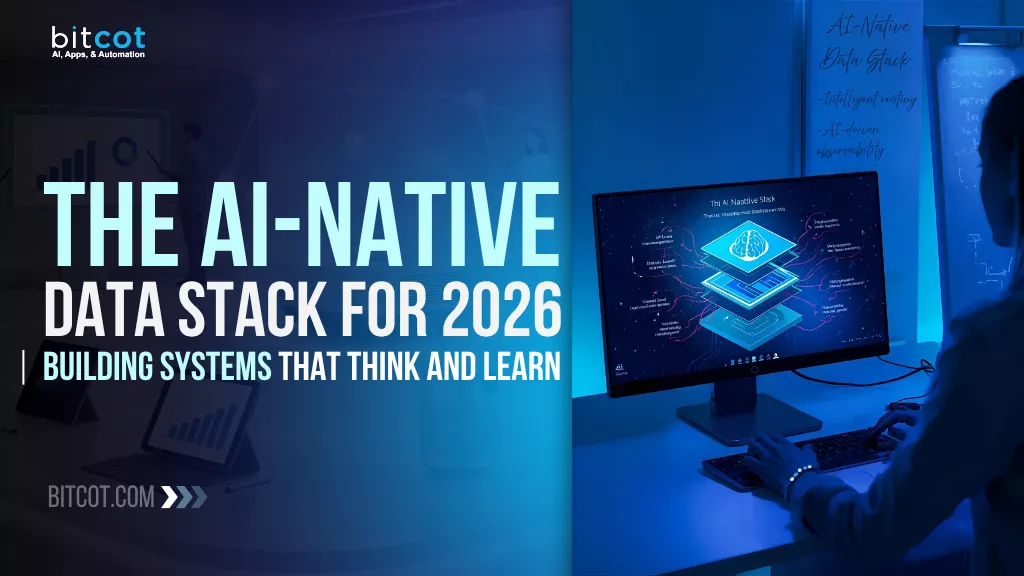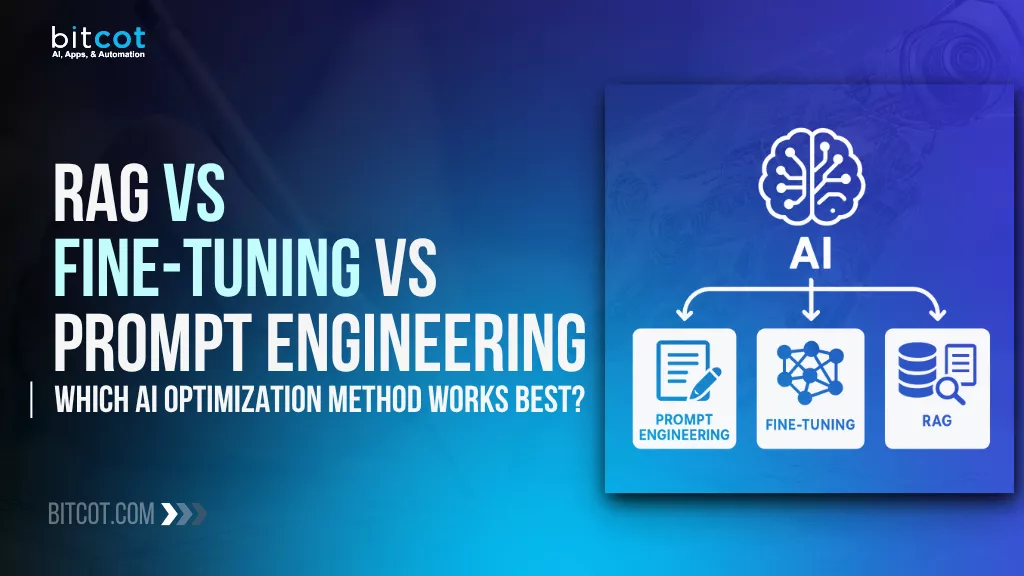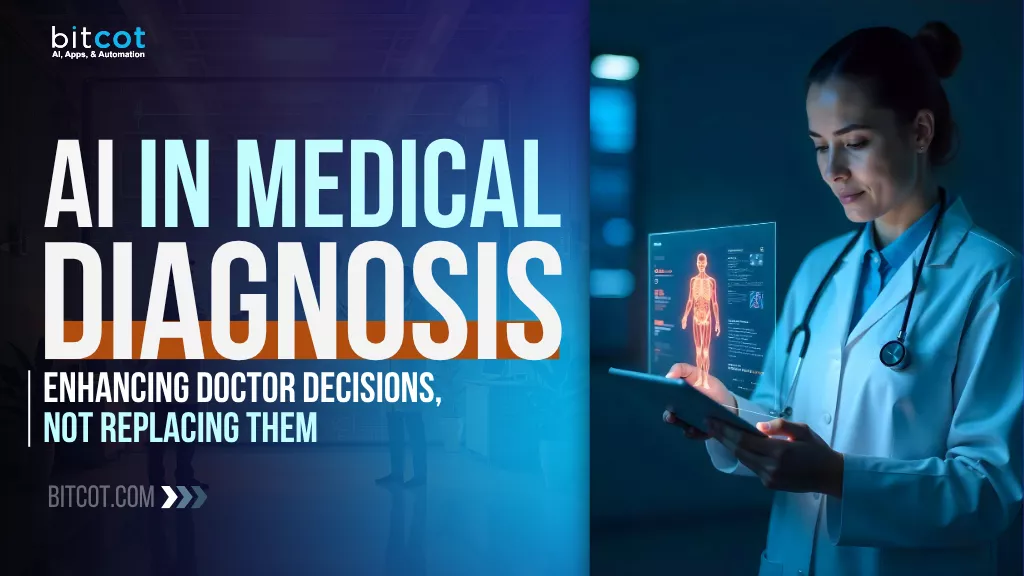
Diagnostic accuracy is becoming a strategic priority for every healthcare organization. Rising case complexity, expanding patient data, and clinician burnout have pushed traditional diagnostic workflows to their limits.
Meanwhile, diagnostic errors continue to impact patient safety, organizational risk, and operational performance.
This is where AI-assisted medical diagnosis is creating meaningful impact
Not by replacing physicians, but by supporting clinical expertise with real-time pattern recognition, evidence-based recommendations, and consistent decision support.
Crucially, the most effective systems are explainable, clinically validated, and designed to integrate smoothly into existing workflows – ensuring trust, transparency, and physician confidence.
Healthcare organizations adopting AI in diagnosis are seeing:
- Higher diagnostic accuracy and earlier disease detection
- Reduced cognitive workload for physicians
- Faster time-to-diagnosis and intervention
- Improved patient outcomes and organizational efficiency
- Compliance with patient data privacy and healthcare standards
The leaders in this space treat AI as a clinical performance multiplier – one that enhances decision-making while preserving the irreplaceable human role in care delivery.
This article explores how AI is being applied in real clinical environments, what outcomes healthcare teams are achieving, the importance of workflow-aligned implementation, and how to adopt these systems responsibly, securely, and at scale.
What is AI in Medical Diagnosis?
Artificial intelligence in medical diagnosis represents the integration of AI technologies into clinical decision-making processes. Rather than replacing human expertise, these systems analyze vast amounts of medical data to provide healthcare providers with evidence-based insights and recommendations.
Modern AI-assisted diagnosis encompasses:
- Machine learning algorithms that identify patterns in patient data
- Computer vision systems that analyze medical images with superhuman precision
- Natural language processing that extracts insights from clinical notes
- Predictive analytics that forecast disease progression
- Neural networks for complex pattern recognition
- Clinical workflows optimization through intelligent automation
The foundation lies in processing and correlating information at scales impossible for human cognition while maintaining the critical human element of empathy, context, and nuanced judgment. Organizations looking to implement these capabilities should consider partnering with experienced AI development services providers.
How AI Transforms Medical Diagnosis: Supporting Healthcare Providers
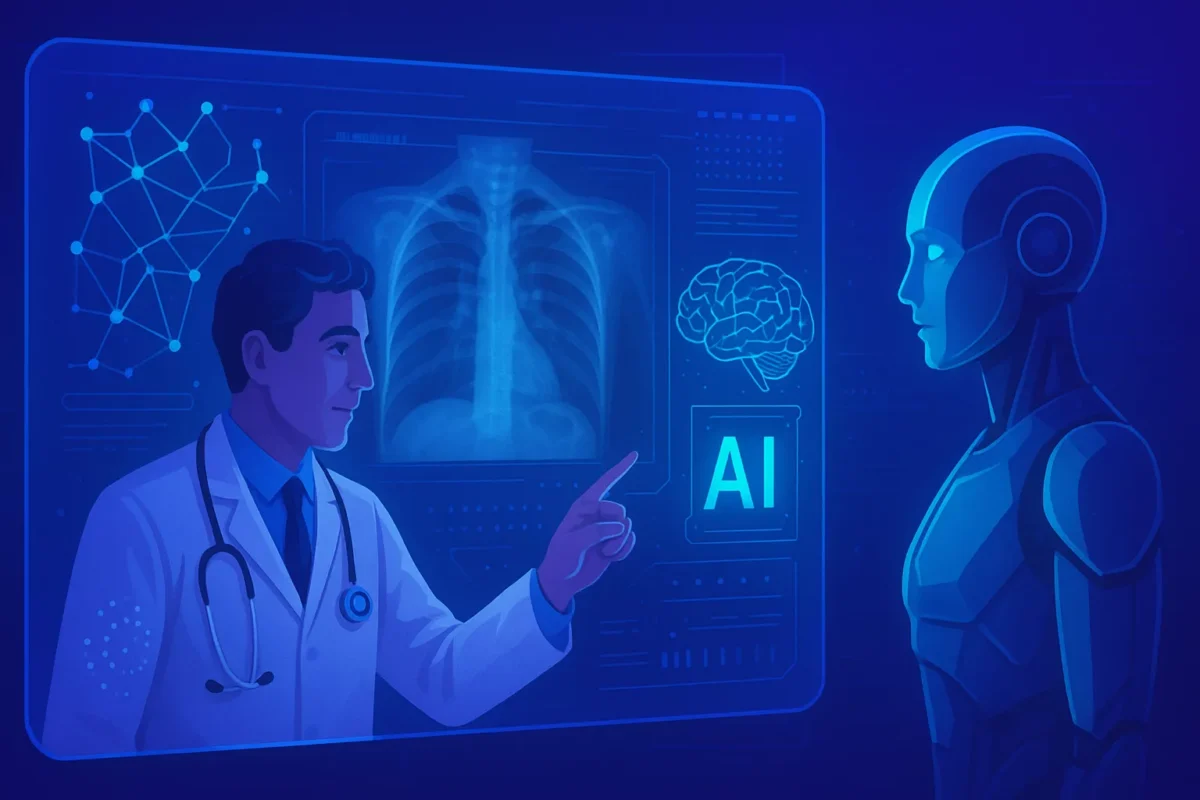 Machine learning fundamentally changes how diagnostic decisions are made by providing physicians with real-time, data-driven insights. Instead of relying solely on experience and limited data points, doctors now access comprehensive analysis spanning thousands of similar cases.
Machine learning fundamentally changes how diagnostic decisions are made by providing physicians with real-time, data-driven insights. Instead of relying solely on experience and limited data points, doctors now access comprehensive analysis spanning thousands of similar cases.
Pattern Recognition Enhancement: AI systems excel at identifying subtle patterns in medical data that might escape human detection, analyzing radiological images, laboratory results, patient histories, and genomic data simultaneously. Advanced imaging software solutions leverage AI to enhance diagnostic accuracy across multiple imaging modalities.
Speed Optimization: What traditionally required hours of analysis can now be accomplished in minutes, with clinical decision support systems providing immediate recommendations.
Knowledge Amplification: AI systems maintain access to the latest medical research and clinical guidelines, ensuring recommendations reflect current best practices.
Risk Stratification: Advanced algorithms assess patient risk levels with unprecedented accuracy, enabling healthcare providers to prioritize cases effectively.
The result is augmentation of physician capabilities – a synergistic relationship where technology enhances rather than replaces human judgment.
AI Medical Diagnosis Benefits
AI is helping clinicians shift from reactive treatment to proactive early-stage care.
For Healthcare Providers
- Enhanced Diagnostic Accuracy: AI-assisted diagnosis can improve diagnostic precision by up to 20%
- Reduced Cognitive Load: Physicians report decreased mental fatigue and improved job satisfaction
- Faster Decision Making: Rapid assessment of complex cases reduces time-to-diagnosis significantly
- Continuous Learning: AI systems update their knowledge base continuously
For Patients
- Earlier Detection: AI identifies conditions in their most treatable stages
- Reduced Misdiagnosis Risk: Multiple validation layers decrease diagnostic errors
- Faster Treatment Initiation: Accelerated diagnostic processes mean treatment begins sooner
- Improved Outcomes: Speed and accuracy translate directly into better health outcomes
For Healthcare Organizations
- Operational Efficiency: Streamlined workflows reduce costs while improving patient throughput
- Risk Mitigation: Enhanced accuracy reduces malpractice exposure
- Competitive Advantage: Organizations attract patients seeking cutting-edge care
- Revenue Optimization: Faster patient processing and improved outcomes boost financial performance
Organizations can accelerate these benefits through AI automation in healthcare, which streamlines workflows and reduces administrative burden.
Why AI Enhances (Not Replaces) Doctors: The Human-AI Partnership Model
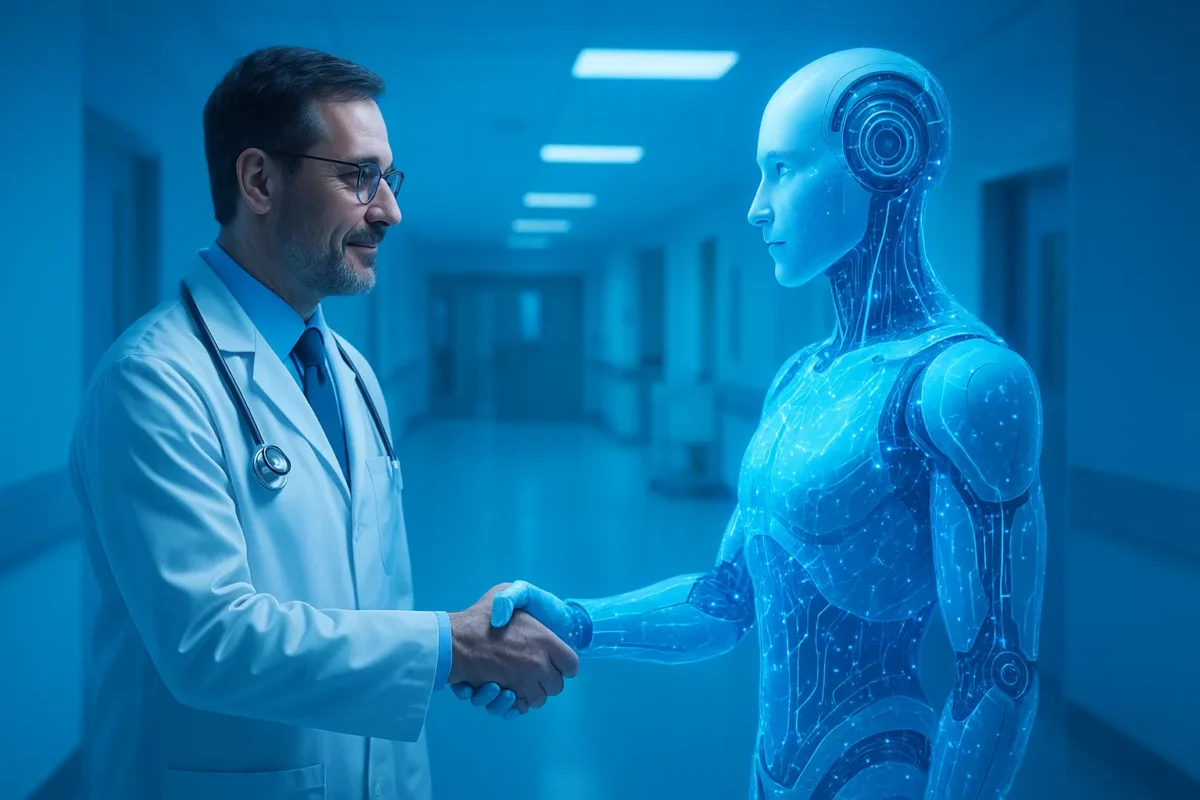 The most successful implementations recognize that AI’s role is fundamentally collaborative rather than substitutional. This partnership model leverages the unique strengths of both artificial and human intelligence.
The most successful implementations recognize that AI’s role is fundamentally collaborative rather than substitutional. This partnership model leverages the unique strengths of both artificial and human intelligence.
Human Strengths: Medical practice requires emotional intelligence, contextual understanding, and nuanced communication that AI cannot replicate. Physicians provide empathy, ethical judgment, and complex reasoning that patients need.
AI Strengths: AI excels at data processing, pattern recognition, and maintaining consistency across large datasets – capabilities that perfectly complement human strengths.
The Synergistic Effect: When physicians work alongside AI, the combination produces results superior to either approach alone. Doctors provide context, judgment, and human connection while AI provides comprehensive data analysis and evidence-based recommendations. Healthcare AI agents can handle routine tasks, allowing physicians to focus on complex decision-making and patient care.
Generative AI in Medical Diagnosis: ChatGPT, Large Language Models, and Clinical Applications
The emergence of generative AI technologies represents the next evolution in medical diagnosis. Large language models trained on vast medical datasets can now engage in sophisticated clinical reasoning.
Current Applications:
- Clinical documentation automation
- Comprehensive differential diagnosis analysis
- Evidence-based treatment recommendations
- Patient-friendly explanations of complex conditions
NLP Applications: Natural language processing algorithms process vast amounts of unstructured text data from electronic health records, extracting valuable insights that support clinical decision-making through automated documentation, pattern recognition, and comprehensive patient profiling. Modern EHR/EMR systems increasingly incorporate these AI capabilities to enhance clinical workflows.
AI Medical Diagnosis Case Studies
Real-world implementations show AI is reducing diagnostic delays and improving survival rates.
Mayo Clinic – Radiology Enhancement: Implementation of computer vision improved lung cancer detection accuracy by 25%. Radiologists using AI detect lung nodules with 94% accuracy compared to 65% without AI assistance – representing thousands of earlier cancer catches.
Johns Hopkins – Emergency Department: AI-driven platform analyzing patient symptoms and medical history reduced average time-to-diagnosis by 30% while improving patient satisfaction scores.
Memorial Sloan Kettering – Pathology: Deep learning systems analyze tissue samples 10 times faster than traditional methods while maintaining diagnostic accuracy comparable to experienced pathologists.
Industry-Wide Impact:
- 85% reduction in diagnostic errors across multiple specialties
- 23% fewer hospital readmissions due to improved initial diagnosis
- 89% accuracy in sepsis prediction, enabling life-saving early intervention
- AI predicts patient deterioration 6-24 hours before traditional methods
The healthcare AI market is projected to reach $187 billion by 2030, but the real metric is lives saved through early detection. Organizations can explore these innovations through healthcare technology trends shaping the industry.
AI Diagnostic Tools Patients Can Use: Symptom Checkers and When to See a Doctor
 Consumer-facing applications provide patients with preliminary health assessments while emphasizing the importance of professional medical consultation.
Consumer-facing applications provide patients with preliminary health assessments while emphasizing the importance of professional medical consultation.
Available Tools:
- Symptom assessment applications
- Chronic disease monitoring
- Medication management systems
- Preventive care reminders
Effective patient education emphasizes that AI diagnostic tools serve as preliminary assessment aids rather than definitive medical advice. These tools excel at identifying when professional medical attention is needed. Healthcare chatbots and AI assistants provide 24/7 support for patient inquiries and triage.
How to Implement AI in Medical Diagnosis: Best Practices for Healthcare Organizations
Successful AI implementation requires strategic planning, stakeholder engagement, and systematic change management.
Phase 1: Assessment and Planning
- Evaluate current diagnostic workflows
- Assess organizational readiness
- Define success metrics
- Secure leadership commitment
Phase 2: Technology Selection
- Evaluate solutions based on clinical needs
- Ensure compatibility with existing systems
- Validate vendor credentials and regulatory compliance
Phase 3: Pilot Implementation
- Select low-risk, high-impact use cases
- Train clinical staff
- Establish monitoring mechanisms
- Gather performance data
Phase 4: Scaling and Optimization
- Expand successful pilots
- Refine workflows based on feedback
- Integrate AI insights into quality improvement
- Develop internal expertise
Organizations achieving greatest success focus on change management, user training, and continuous improvement rather than technology alone. Working with experienced healthcare software development companies ensures proper implementation and integration.
AI Diagnostic Accuracy: How Reliable is AI in Medical Diagnosis?
Current research demonstrates that well-implemented AI systems can match or exceed human diagnostic accuracy in specific domains.
Performance Metrics:
- Sensitivity: High detection rates for positive cases
- Specificity: Reduced false positive rates
- Consistency: Maintained performance eliminating fatigue factors
- Speed: Real-time analysis enabling immediate clinical support
Reliable AI systems undergo rigorous validation including clinical trials, regulatory review, and ongoing performance monitoring. The most effective systems incorporate feedback loops enabling continuous improvement. AI agents in EHR/EMR systems demonstrate these capabilities through enhanced clinical decision support.
Privacy and Security in AI Medical Diagnosis
Responsible AI deployment demands careful consideration of fairness, transparency, patient rights, and data protection.
Ethical Considerations
Key Ethical Priorities:
- Algorithmic Bias: Ensure training data diversity and monitor for discriminatory outcomes
- Transparency Requirements: Provide explainable AI approaches with clear reasoning
- Informed Consent: Patients should understand when AI contributes to their care
- Professional Liability: Establish clear protocols for responsibility and accountability
Data Protection Requirements
Security Standards:
- HIPAA compliance for all AI systems
- Data encryption in transit and at rest
- Role-based access controls
- Comprehensive audit trails
Organizations must implement privacy-preserving techniques such as differential privacy and federated learning to protect patient information while enabling AI development. Leading organizations establish AI ethics committees, implement bias monitoring protocols, and maintain transparent communication about AI capabilities and limitations. Medical device software development must meet stringent regulatory requirements for data security and patient safety.
AI Medical Diagnosis Costs: ROI Analysis and Healthcare Economics
Understanding financial implications is crucial for healthcare executives evaluating implementation decisions.
Investment Components:
- Technology acquisition and licensing
- Staff training and change management
- System integration with existing infrastructure
- Ongoing maintenance and support
ROI Sources:
- Direct cost savings from reduced diagnostic errors
- Improved operational efficiency
- Enhanced physician productivity
- Better patient outcomes and satisfaction
Healthcare organizations typically achieve positive ROI within 12-24 months of implementation, with annual returns ranging from 15-30%.
| AI Implementation Scope | Initial Investment | ROI Timeline | Annual ROI % |
| Radiology AI (Single Dept) | $200K – $500K | 8-12 months | 25-35% |
| Emergency Department AI | $300K – $750K | 12-18 months | 20-30% |
| Hospital-wide Clinical Support | $1M – $3M | 18-24 months | 15-25% |
| Multi-specialty AI Platform | $2M – $5M | 24-36 months | 18-28% |
Common AI Diagnostic Implementation Challenges and Solutions
Most barriers come from workflow integration, so success depends on clinician alignment and training.
Technical Challenges
- Integration Complexity: Requires phased implementation and dedicated teams
- Data Quality Issues: Demands investment in data governance and quality assurance
- Performance Monitoring: Needs sophisticated systems tracking AI performance
- Regulatory Compliance: Must meet strict requirements while maintaining flexibility
Organizational Challenges
- Physician Resistance: Address through collaboration, training, and demonstrated value
- Change Management: Requires careful planning and stakeholder engagement
- Resource Allocation: Develop realistic budgets and timelines
Organizations should consider AI consulting services to navigate these challenges effectively and ensure successful implementation.
AI vs. Human Doctors: Why Collaboration Outperforms Both
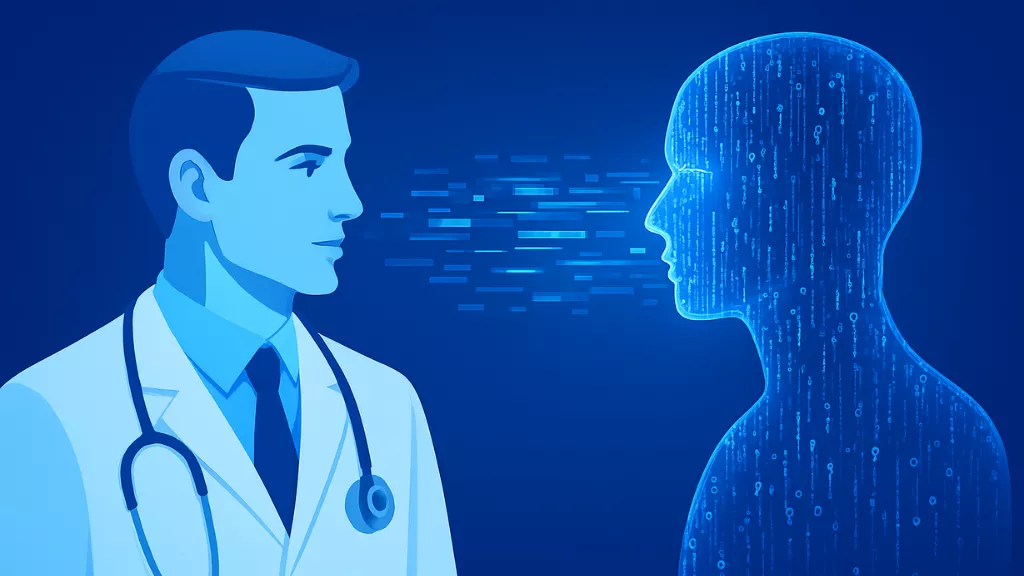 The optimal approach involves collaboration leveraging unique strengths of both.
The optimal approach involves collaboration leveraging unique strengths of both.
Comparative Performance:
| Diagnostic Scenario | Human Accuracy | AI Accuracy | Human + AI Accuracy |
| Chest X-ray Analysis | 85-90% | 88-93% | 94-97% |
| Skin Cancer Detection | 80-85% | 86-91% | 92-96% |
| Diabetic Retinopathy | 82-87% | 90-95% | 95-98% |
| ECG Interpretation | 88-92% | 89-94% | 95-98% |
| Pathology Analysis | 90-95% | 91-96% | 96-99% |
Research consistently demonstrates that physician-AI teams outperform either approach alone, with collaboration reducing false positives by 40-60%.
Future Trends in AI Medical Diagnosis: 2025-2030 Predictions
AI will increasingly support predictive, preventive, and personalized healthcare care models.
Emerging Capabilities
- Predictive Healthcare: AI will predict disease onset before symptoms appear, enabling preventive interventions
- Personalized Medicine: Customized diagnostic and treatment approaches based on individual genetic profiles
- Real-Time Monitoring: Wearable devices providing continuous health monitoring and immediate alerts
- Global Health Access: AI-powered diagnostic tools extending expert knowledge to underserved areas
Technology Evolution
- Quantum computing for complex medical data analysis
- Edge computing enabling real-time AI analysis without cloud connectivity
- Multimodal AI integrating text, image, and sensor data
By 2030, AI will be standard in most diagnostic workflows, with sophisticated predictive and personalized capabilities becoming routine. Healthcare mobile app development will enable these AI capabilities on smartphones and tablets for point-of-care diagnostics.
How to Choose the Right AI Diagnostic Tool for Your Practice
Choose an AI solution that integrates smoothly with your current workflow and improves patient outcomes.
Clinical Effectiveness:
- Demonstrated diagnostic accuracy in relevant specialties
- Integration with existing clinical workflows
- Evidence of improved patient outcomes
- Regulatory approval and clinical validation
Technical Requirements:
- Compatibility with current IT infrastructure
- Data security and privacy protections
- User interface design and ease of use
- Scalability and performance characteristics
Business Considerations:
- Total cost of ownership and ROI projections
- Vendor stability and support capabilities
- Training requirements and change management needs
- Contract terms and service level agreements
Successful AI tool selection involves multidisciplinary teams including clinicians, IT professionals, and administrative leaders. Pilot programs provide valuable insights before full deployment.
How to Implement AI Medical Diagnosis
AI in medical diagnosis represents healthcare’s natural evolution toward greater precision, efficiency, and patient-centered care. The evidence is clear: when implemented thoughtfully, AI systems enhance rather than replace physician capabilities, leading to better outcomes for patients and healthcare organizations alike.
The future lies not in automation but in augmentation – empowering healthcare providers with tools that amplify their expertise, reduce cognitive burden, and enable focus on the human elements of care that define excellent medical practice.
Healthcare executives who embrace this collaborative approach position their organizations for success in an increasingly competitive healthcare environment. The question is not whether AI will transform medical diagnosis, but how quickly and effectively organizations will adapt to leverage these powerful capabilities.
For healthcare organizations ready to explore AI solutions, partnering with experienced AI agent development teams ensures successful implementation. The technology exists, the evidence is compelling, and the competitive advantages are significant for early adopters who implement AI strategically and thoughtfully.
Ready to transform your diagnostic capabilities with AI? Contact our healthcare AI experts to discuss your specific needs and explore how custom AI solutions can enhance your organization’s diagnostic accuracy, efficiency, and patient outcomes.



